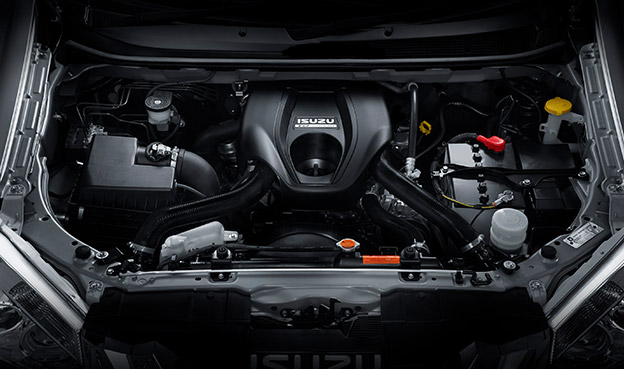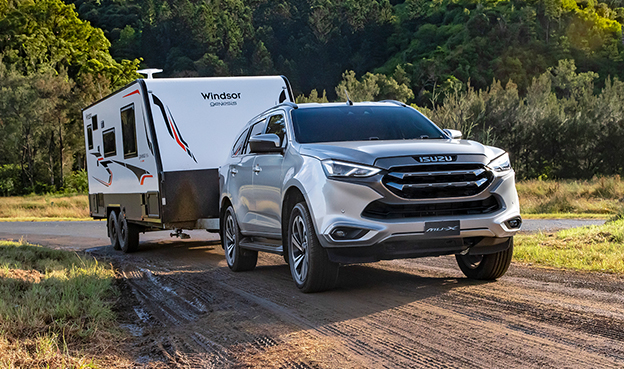

Hello snow ... Hello weekend! Getting out of town for a weekend in the snow is a much-loved winter pastime for many of us. But getting to your favourite alpine destination takes some extra care and planning to ensure you arrive safely. Driving on alpine roads in winter not only requires concentration and proficient driving skills, but with thousands of others all thinking the same thing this winter, it can also take a lot of patience.
To help you arrive safely, we’ve prepared a simple list of considerations for those of you looking to hit the slopes this winter.
4WD DOESN'T MAKE YOU INVINCIBLE
While vehicles with 4WD typically do perform better in snowy and icy driving conditions, the technology can backfire by giving drivers a false sense of safety. So don’t take it for granted that because you’re behind the wheel of a 4WD, you’ll breeze through the tricky conditions.
4WD is used to send the specific amount of needed torque to each of your car's four tyres to give it added traction to move forward through snowy roads. That doesn't mean, however, that you can race down the road at top speed in the snow and bring yourself to a quick stop. Four-wheel drive isn't going to give you the traction you need to brake. It can help you get through some difficult conditions, but it doesn't make you impervious to slippery conditions. So take it easy.

TYRES, WIPERS & MORE
To ready your car for an alpine venture, check that each of your tyres has at least 5mm of deep tread across the full width of the tyre. All-Terrain tyres can handle most driving conditions, but if you’re a serious adventurer and make a habit of searching for back-country tracks, or live in an area that gets a lot of snow, you should consider purchasing snow tyres. Check your coolant concentration and levels, battery power and make sure that your front and rear demisters work. And don't forget to pack an ice/snow scraper and de-icer for your windscreen.
When using your wipers in winter, remember to turn them off BEFORE shutting down the engine. And if your blades freeze to the windshield, when you go to start your car, the wiper motor may burn out trying to get them back to the "rest position," while you're sitting there wondering, "What's that burning smell?"
Also, once you’re closer to the snow fields, it’s worth stopping at a service station to top up your fuel tank with alpine diesel to avoid freezing (waxing) of fuel.

FOLLOWING TOO CLOSELY
Many people inexperienced with driving in the snow make a bad habit out of tailing the vehicle in front of them too closely. Like driving too fast, this lessens your reaction time if there's a problem with the vehicle ahead of you and you need to slow down suddenly.
It's recommended that you double your normal distance between cars, giving yourself a minimum braking distance of six seconds. Put another way, if you're traveling at 50km/h, you should have 12 car lengths between you and the vehicle ahead of you.
You should also be keeping a lookout for hazard signs and rockfalls, as well as wildlife - kangaroos, wallabies, deer, and wombats are all common in Alpine areas and can seem to ‘jump out’ of nowhere! So make sure you give yourself plenty of time to brake or steer around them should they cross your path.

SLAMMING ON THE BRAKES
When you feel your tyres start to slip, it's easy to panic and slam on the brakes. Don't do it! – This removes traction from your tyres, taking away your ability to control your vehicle.
Brake with steady, even pressure. When handling snow-covered corners, you should begin a steady braking as you approach the turn. Once in the corner, ease off the brakes and use the car's remaining traction to steer through the turn.
If you do find yourself in an understeer or oversteer situation on a very slippery road, smoothly ease off the throttle and keep the steering pointing in the direction of intended travel. Rapid or harsh driver inputs of any kind in snowy or icy conditions should always be avoided.

DRIVING TOO FAST
Driving too fast is the biggest snow driving error you can make. Drivers have a bad habit of thinking that they’re still on the highway and it’s OK to drive at their usual speeds. Wrong!
Driving too fast reduces the amount of time you have to react if something goes wrong, and increases the severity of any collision. It also takes four to 10 times longer to brake on an icy or snowy road surface than it does on dry asphalt.
And even if you maintain control of your car, not everyone else will. So don't ever get lulled into a false sense of security. Do everything slowly and gently. Remember, in the snow, your tyres are always just barely grabbing the road. Accelerate slowly and gently, turn slowly and gently, and brake slowly and gently. To do this, you have to anticipate turns and stops. That means what? Going slowly and leaving plenty of distance between you and other cars. Rapid movements lead to skids and loss of control.
You should slow your speed when the temperature is close to freezing and sleet and snow have begun to fall. Remember that there's no right speed zone to be traveling in when it's snowing, so you need to pay close attention to the road conditions and how your car is handling to gauge a safe speed.
So take your time, enjoy the scenery and have a safe journey!





